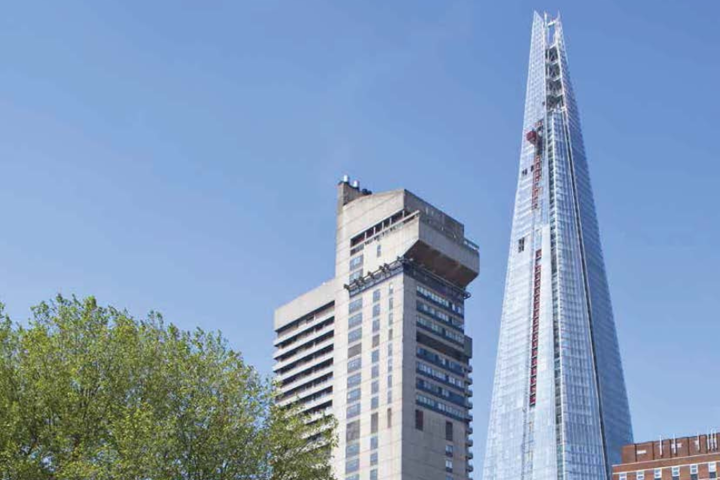In 2016, CIBSE launched weather data for 16 locations across the UK, three of which are in London.
These weather data sets are required for Part L and Part O compliance.
The weather variables are synthesised into two types of CIBSE weather files:
- Design Summer Year (DSY)
- Test Reference Year (TRY)
DSYs and TRYs are used as climate inputs into building simulation software.
Building Regulations Compliance
As of June 2022, the Department for Levelling Up, Housing and Communities has officially endorsed the newer TRY weather sets (the 2016 files) for compliance.
View 2016 packages and prices
For more information on the methodology and use of the new DSYs for London download the free publication TM49 Design Summer Years for London.

What is 2016 Weather Data?
TRY
The TRY is composed of 12 separate months of data, each representing an 'average' month as derived from the collected data. The TRY is used for energy analysis and for compliance with the UK Building Regulations (Part L).
DSY
The DSY represents a single continuous year, rather than a composite year made up of 'average' monthly values, and is used for overheating analysis.
The parameters included in the data sets are:
- Dry bulb temperature (°C)
- Wet bulb temperature (°C)
- Atmospheric pressure (hPa)
- Global solar irradiation (W·h/m2)
- Diffuse solar irradiation (W·h/m2)
- Cloud cover (oktas)
- Wind speed (knots)
- Wind direction (degrees clockwise from North)
- Present weather code.
For more information download the Technical Briefing and Testing [PDF]
The packages are made up of data presented in three formats:
- EDSL Tas
- EPW
- Microsoft Excel.
If your software is looking for .fwt files: this is the old IES format; IES now uses .epw files. CIBSE's 2016 weather data sets do include .fwt files. Request more information from our team
Option 1: current CIBSE TRY/DSY hourly weather data (14 sites)
Option 2: future CIBSE TRY/DSY hourly weather data (14 sites)
Future hourly weather files are based on the existing design summer years (DSYs) and test reference years (TRYs) and incorporate the UKCIP09 climate change scenarios. These are available for 14 sites over three time periods and emissions scenarios:
- 2020s (2011-2040)
- High - 10th, 50th, 90th percentile
- 2050s (2041-2070)
- High - 10th, 50th, 90th percentile
- Medium - 10th, 50th, 90th percentile
- 2080s (2071-2100)
- High - 10th, 50th, 90th percentile
- Medium - 10th, 50th, 90th percentile
- Low - 10th, 50th, 90th percentile.
Option 3: Combined current & future CIBSE TRY/DSY Hourly Weather Data (14 sites)
A discount is available when Options 1 and 2 are purchased together.
To order weather data, please email a completed order form to [email protected]. Once payment has been processed, you will be emailed a link to all files. If you are a CIBSE Member, please complete the CIBSE Members form; if you are not a member, please complete the Standard form.
For advice on which packages to choose, please email [email protected] or call +44 (0)20 8772 3652.
CIBSE Weather data sets are based on data officially licensed from the UK Meteorological Office.
Download the order form and follow the links to purchase your package. After ordering, files will be supplied as a link in your MyDownloads.
Download order form
Note: Prepayment for Weather Data sets is required before sets are made available to purchasers.
For advice on which packages to choose please email our team at [email protected]
View all 2016 CIBSE weather data packages [PDF]
In London, the GLA requires that modelling is carried out using weather data and guidance from CIBSE TM49 Design summer years for London (2014), using weather files that account for both the urban heat island effect and for future climate change. In line with this, the GLA Energy Planning – Greater London Authority Guidance (April 2015) specifies that three different weather data files should be used in overheating analysis:
- 1976: a year with a prolonged period of sustained warmth.
- 1989: a moderately warm summer (current design year for London)
- 2003: a year with a very intense single warm spell.
The TM49 dataset contains each of these weather years for three London sites (urban, suburban and rural) in order to take account of variance in the urban heat island effect.
For buildings with long service lives or where overheating impacts are more critical, it is suggested that the building is modelled using more extreme (‘future’) weather data in addition to modelling against the three weather files above. The TM49 dataset, product code WDD16LON, includes future weather files for this purpose.
CIBSEs Future DSY files are based on:
- the current DSY files (1984 – 2013), which are based on Met Office observation data,
- the climate change factors from the UKCP09 climate projections,
- the same 14 (for TRY) / 16 (for DSY) UK locations,
- three time periods: 2020s (2011-2040), 2050s (2041-2070) and 2080s (2071-2100),
- the following emissions scenarios:
- 2020s - High emissions scenario
- 2050s - Medium and High
- 2080s - Low, Medium & High
- the following probability scenarios: 10th, 50th and 90th percentiles.
Weather Data Webinars

Design Summer Years for London (TM49)
For more information on the methodology and use of the new DSYs for London download the free publication TM49 Design Summer Years for London.
Download TM49
UK Meteorological Office
Further information on the Met Office’s range of services for construction can be found on their website.
Find out more